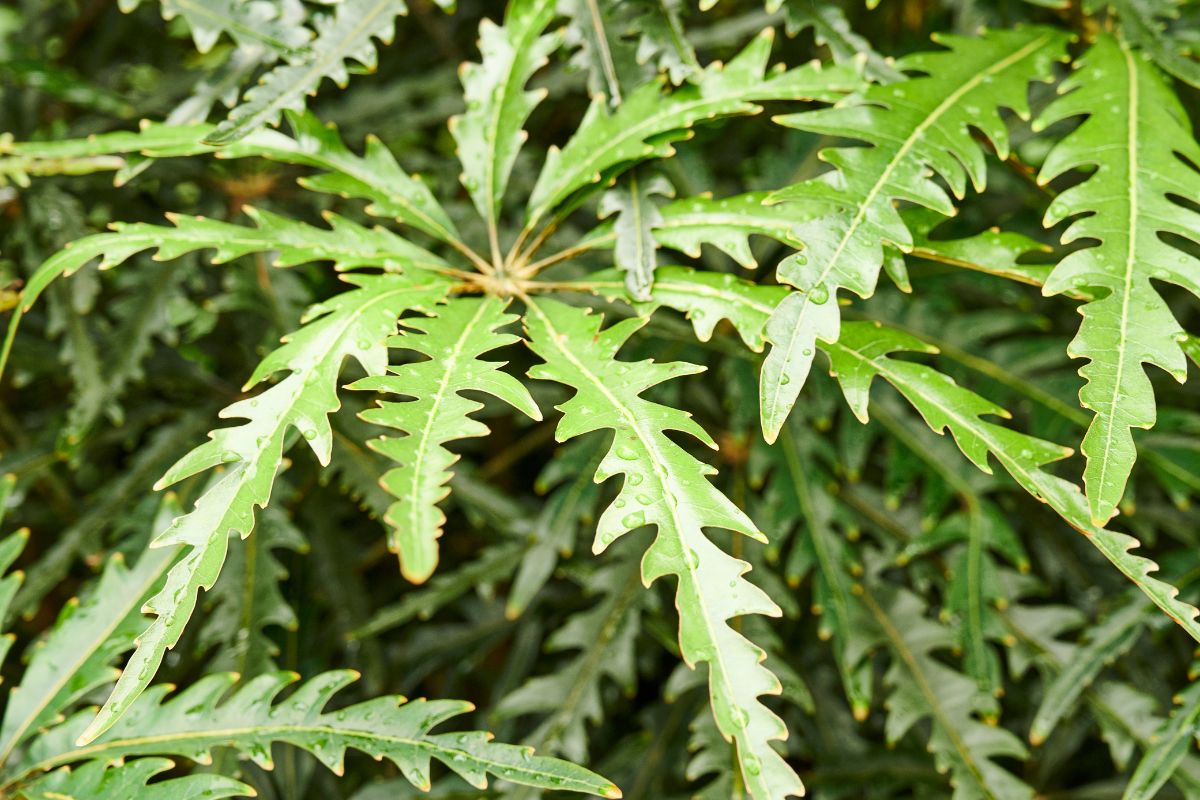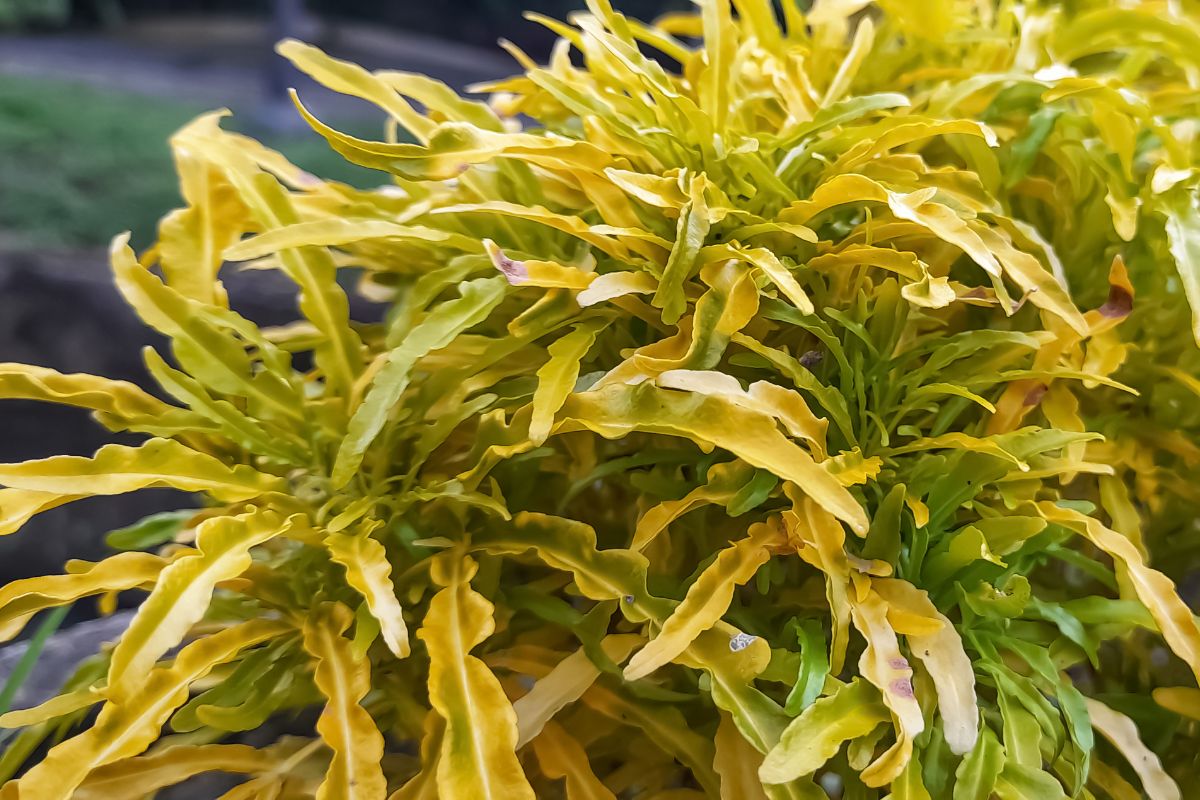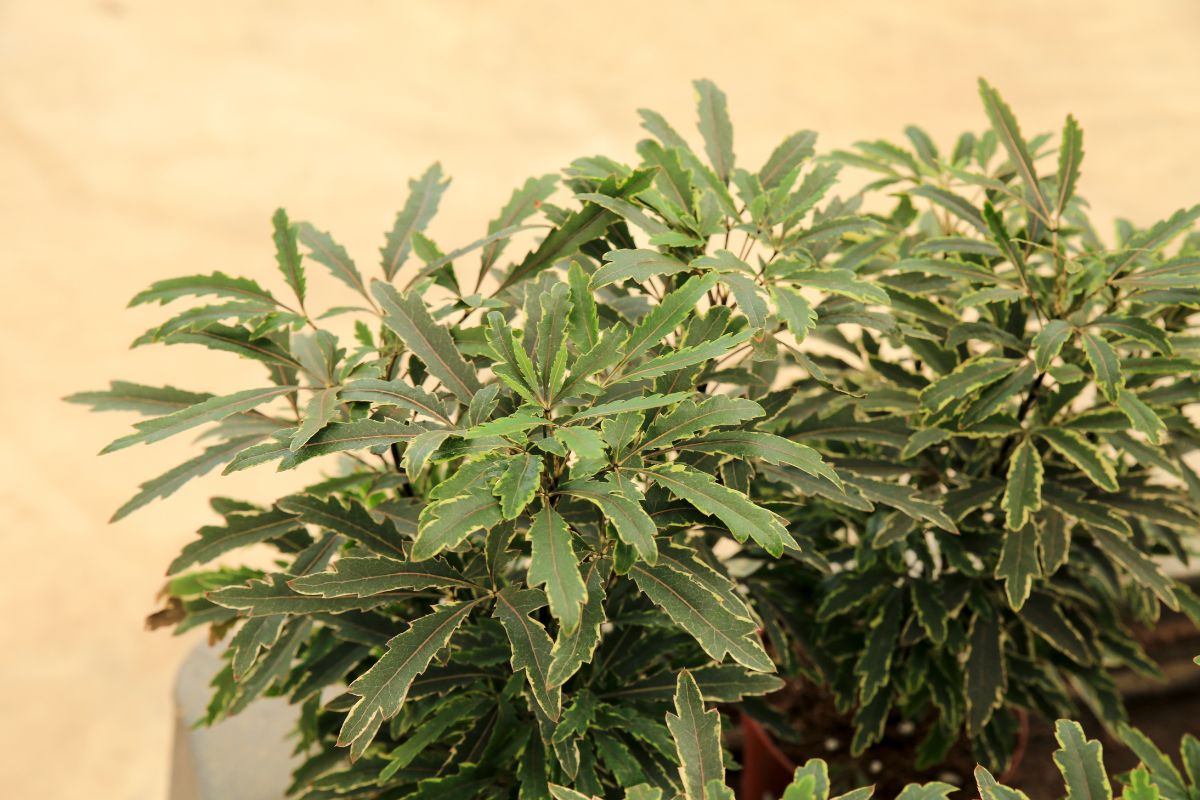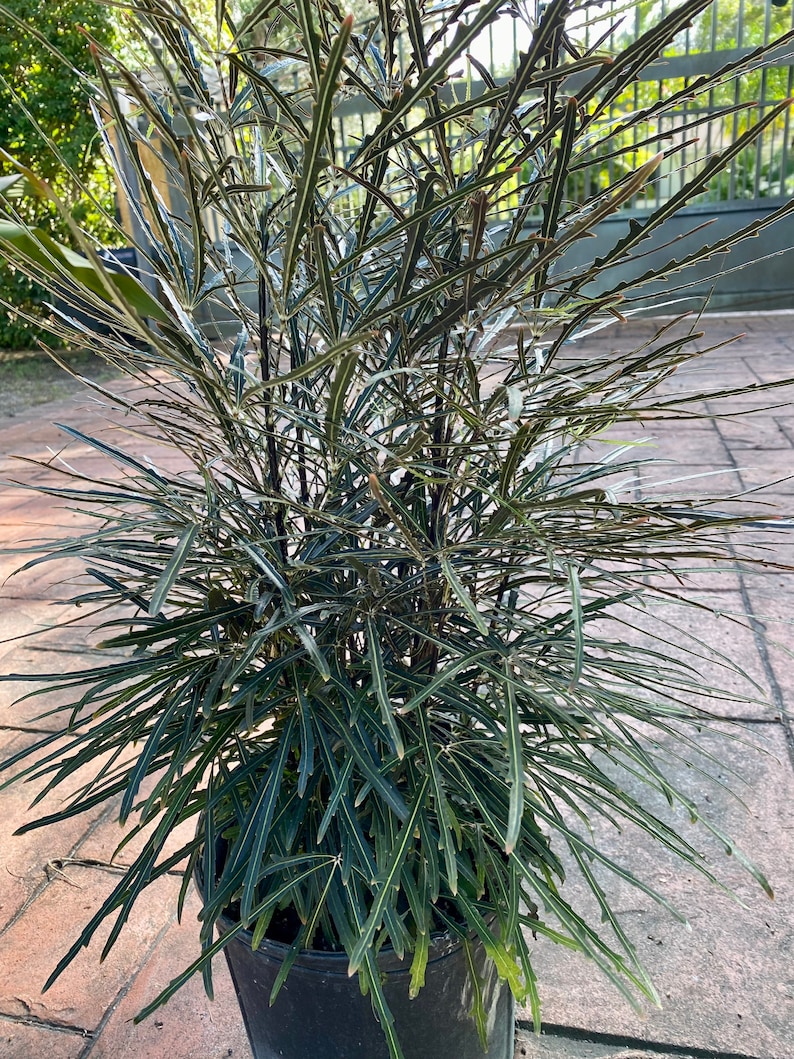The False Aralia is known for its beautiful leaves, but it can be a bit of an enigma as it’s a rainforest native. It’s not as easy to grow as other plants in the garden because it requires more water and humidity than most plants do.
If you’re willing to put some time into your plant care routine, this lovely plant will reward you with attractive green leaves.
Follow this guide on how to care for the false aralia to give it proper care.
False Aralia Plant Overview

Once botanically named the Dizygotheca elegantissima, the false aralia was reclassified as the Schefflera elegantissima honoring J.C. Scheffer, a 19th-century botanist from Gdansk, Poland.It is a member of the Araliaceae family.
A native of the South Pacific, and specifically the rainforests in New Caledonia, the striking false aralia cultivated for its lovely textured leaves can grow to heights of twenty feet tall in its native environment.
Although usually acquired as a table centerpiece plant, when indoors it can reach an impressive six feet in height and one to two feet in width with the right environmental conditions and care.
The lower leaves of this plant may resemble marijuana somewhat, but there is no relation between the two. Foliage growing at the top of the plant will develop in a circle.
The serrated leaflets resemble lace and together with its slender appearance, bestow elegance wherever it is positioned. The foliage is a coppery brown in color that will gradually darken to a mix of green and black as the leaves mature.
Because leaflets are slender, they are thought to resemble fingers, and another name for it is the Finger Aralia. Other popular names include the Spider Aralia and the Threadleaf Aralia.
Yellow-green blooms may appear in the autumn and winter. Once the flower passes, globose black fruit will develop. Indoor plants rarely, if ever, produce either flowers or fruit.
False Aralia Plant Care Guide
The false aralia can be cultivated outdoors in USDA hardiness zones 10 and 11. However, it usually finds its place as an admired houseplant.
Growing Medium for the False Aralia Plant
A good quality all-purpose potting mix for houseplants is suitable for this plant to thrive. A soil mixture containing peat moss should work well.
Ensure the mix is able to retain moisture, but also drains well, so it doesn’t become waterlogged.
A pot with good drainage is important to help with water drainage.
Light for the False Aralia Plant

This is not a plant that likes direct sun exposure as this will cause leaves to scorch and turn brown. Bright, sunny, but indirect light is the rule. Sun rays should never fall on the plant’s foliage.
If bright light is insufficient, the plant may take on a pale appearance and develop fewer leaves, causing it to look leggy.
Water for the False Aralia Plant
Thorough watering is fine if it is not excessive. You can soak or drench the plant, but then allow the excess water to drain out in a sink or dish.
The top inch of the soil bed should be allowed to dry out before watering again. Tropical houseplants, like the false aralia, like to have moist soil.
Humidity needs to be moderate to high, meaning a minimum of 50% or above humidity level is needed for the plant to thrive.
Temperature for the False Aralia Plant
The false aralia likes warmth, so temperatures should be maintained in the 65° to 85° Fahrenheit range. Temperatures that fall below 60°F can cause leaf drop.
If you are growing false aralia plants outside or move the plant outdoors for the summer, it might have difficulty acclimating to being moved indoors afterward if temperatures are drastically different.
It’s best not to quickly move the plants around too much from cold temperatures to hot temperatures that range widely. See if you can give it warm temperatures in between, so it’s a gradual shift and won’t be a shock to this tropical plant.
Fertilizer for the False Aralia Plant
In the fall and winter, feed your plant monthly with a 10-10-10 NPK liquid fertilizer diluted to half strength. In the spring and summer months during growing season, increase feedings to every two weeks.
Pruning and Repotting the False Aralia Plant

The false aralia is a slow grower, so it really will not require pruning. The only exception to this will be if you want to control its height.
As it matures, lower leaves will shed and a single trunk will be more evident. Expect offsets to grow at the base of the plant.
This plant can maintain a shorter, shrub-like appearance if it is pruned annually. In this case, you can prune the plant to approximately six inches above the soil bed. Spring is the best moment for pruning.
This plant grows best when the root system is slightly confined. Repot your false aralia only if it outgrows its current container and select the next larger size for a new pot that holds its roots.
Water your false aralia thoroughly before transplanting. The moist soil will hold the root ball together as it is being moved from an old pot to a new one. When transplanting, always provide fresh potting soil.
If you allow your plant to grow tall, select weighted or heavy pots to prevent it from toppling over as it may become top-heavy.
Propagating the False Aralia Plant
The false aralia can be propagated using seeds or with stem tip cuttings. Cuttings should be taken in the early springtime.
Dip the cut end in root hormone and then insert it in a container with fresh moist potting soil. Now cover your cutting and pot with a plastic bag to maintain humidity around the stem cutting. Place it in a warm location, but out of direct sunlight.
False Aralia Plant Pests, Diseases, and Problems

Mealybugs and spider mites are the two pests to keep an eye out for.
A severe spider mite infestation can be lethal. Wipe the leaves and undersides as well, with insecticidal soap and mist your plant twice daily for a week to ten days. Should an infestation persist, it is better to dispose of the plant.
For mealybug attacks, remove as many mealybugs manually as possible. Treat the base of leaves with cotton dipped in alcohol every four to five days, particularly where their cottony presence is evident.
An insecticidal soap or neem oil can be used when the mealybugs are crawling before the cotton-like substance appears on the plant.
The false aralia does not appreciate moving, so if you need to change its location, do so in the spring. It may, nonetheless, experience leaf drop after the initial move.
Leaf drops may also occur when humidity levels are too low, or with either underwatering or overwatering. You can increase low humidity levels with a humidifier, wet pebble tray or by misting your plant daily.
Avoid watering with cold water to prevent root shock, Use tepid or room temperature water.
Both underwatering and overwatering can sicken and eventually kill a plant. Wilted leaves will indicate overwatering.
Underwatering will cause roots to wither, whereas overwatering will cause waterlogged soil where the roots will suffer from oxygen deprivation, leading to root rot or stem rot.
False Aralia Plant Toxicity and Pets
According to the ASPCA, the false aralia is non-toxic to dogs and cats.
False Aralia Plant Care Final Thoughts
Do you have a vertical space in your indoor garden that needs filling up or decorating? You won’t find a tropical beautry much better than the false aralia plant for your home.
Here are more houseplants to consider growing at home:
False Aralia Plant Care FAQs
Can the False Aralia take full sun?
The false aralia cannot take direct sunlight because can cause scorched leaves. It prefers bright indirect light.
Is the False Aralia an indoor plant?
The false aralia is both an indoor and outdoor plant. It won’t grow as large indoors, but it still makes a great addition to any living area. It’s actually more popular as an indoor plant as the environment is harder to control outdoors.
What is False Aralia used for?
The false aralia is used for landscaping purposes, especially in areas such as patios, walkways, borders, planters, etc. The foliage looks good year round and adds color during winter months.
Can the False Aralia live outside?
Yes, the false aralia can live outside provided there is adequate warm temperatures, humidity levels and protection from direct sunlight. It’s best for USDA hardiness zones 10 and 11.
Why is my False Aralia dying?
Your false aralia could be dying for a number of reasons, including: overwatering, underwatering, overfeeding, underfeeding, or pest infestations.
Should you mist False Aralia?
Yes, you can mist the false aralia if needed. This helps keep the plants healthy and prevents them from getting too dry if you live in a dry climate. Misting can help increase humidity levels for the plant.



